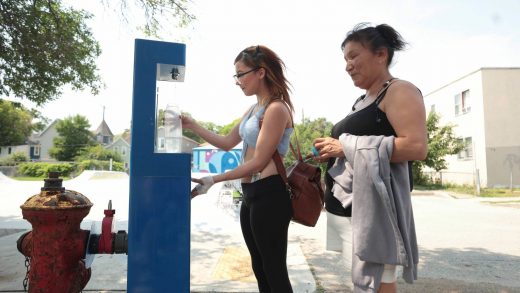
Peter Meecham/Stuff
Olivia Ogilvie, a co-founder of a cultivated meat start-up, works at a lab in the University of Canterbury.
Biochemist Olivia Ogilvie wants to share New Zealand meat with the world. But there’s a catch.
The scientist – who studied at the Universities of Auckland and Canterbury – co-founded start-up Opo Bio to develop cultivated meat technology.
Investors suggest animal-free meat could be cheaper and less damaging to the climate than the original. But currently, cultivated burgers and nuggets can only be made at a small scale and for a relatively expensive cost.
Opo Bio’s work hopes to change that – using cells from Kiwi cattle, sheep and pigs.
What we term meat is an arrangement of different types of animal cells, Ogilvie explained.
To taste like the real thing, cultivated meat needs muscle cells, connective tissue and fat cells in a similar combination. “The way these cell types are arranged influence the taste, texture and quality of a piece of meat,” she said.
Using what Ogilvie describes as “cellular agriculture”, companies have produced “awesome prototypes that look pretty identical” to traditional meat, she said.
“But the challenge is doing this at scale, cost effectively.”
Scientists take cells from donor animals – often livestock in the slaughterhouse. To make meat, the tiny cells are housed a big vat known as a bioreactor, fed nutrients and left to reproduce.
It’s a very different life, Ogilvie said. Rather than living in the body of a moving, eating and sleeping animal, cells are suspended in liquid. Cells often find that challenging to adapt to, she said.
Farmers breed animals to produce more meat – but they are working with nature’s constraints. An animal’s body sends signals that regulate how often muscle, connective tissue and fat cells divide, Ogilvie explained.
In a bioreactor, a cultivated meat company can directly send these signals to encourage quick and efficient reproduction: “the faster the better”.
Ella Bates-Hermans
Extreme weather brings rougher growing conditions, which can cause food shortages and price rises.
With $1.5 million of investment raised last year, Opo Bio is hunting for stem cells able to turn into muscle, connective tissue and fat that also thrive in liquid conditions.
“There’s a lot of opportunity to make the whole process a lot better,” Ogilvie said.
The company intends to create patented “cell lines”, which it would sell to cultivated meat producers. It would be akin to a stud farm for the emerging industry. The offspring of the original “stud” cell needs to be consistently high-performing.
Opo Bio has partnered with farms throughout the country, Ogilvie added. “We select animals that are super healthy… and have had a good life.”
The start-up doesn’t use genetic engineering to change the stem cell’s DNA, Ogilvie said. The cells taken from donor animals respond to the bioreactor conditions differently. Some can’t handle the floating, while others gobble plenty of food without much growth.
Peter Meecham/Stuff
Rather than using genetic engineering, Ogilvie and her team select the best cells from donor animals.
When cows digest grass, cows, sheep and deer burp methane, a potent greenhouse gas. For that reason, red meat is one of the highest-emitting foods.
Cultivated meat could avoid these emissions – though would have to account for any greenhouse gas produced by the facility and the food source fed to the cells.
One study concluded that cultivated meat’s footprint could be significantly lower than traditional meat – but depending on the food source, could end up being even higher.
Ogilvie said: “As a company, we’re quite cautionary about this… The technology’s so early, it’s so hard to know what impact of the commercial products will actually be. We hope they will be lower than conventional meat.”
Opo Bio hasn’t sold any of its cells to cultivated meat producers yet. But it already has customers, Ogilvie said: other researchers in the industry.
Through donating cells, she added, Kiwi animals could one day doubly feed the world.
Our weekly email newsletter, by the Forever Project’s Olivia Wannan, rounds up the latest climate events. Sign up here.


